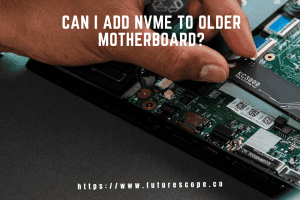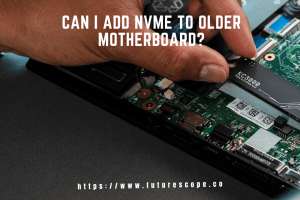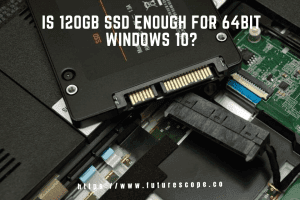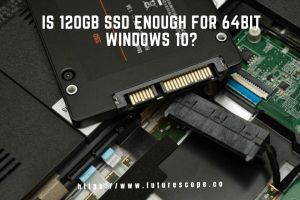What We Have Covered in This Article
Last Updated on April 21, 2021 by Editor Futurescope
Embedded systems are everywhere. Surprisingly many people use embedded systems in their day-to-day lives but are not aware of what an embedded system is. Embedded systems are basically intelligent computing devices that we use and are surrounding us. For starters, most of the electrical devices and electronic circuits which we use frequently in our day-to-day life are designed using embedded systems technology. For example, the very computers, mobile phones, tablets, laptops, digital electronic systems, and other electrical and electronic gadgets are designed using embedded systems.
Still wondering what is embedded system and how does it works? If you are not a techy person it can be difficult to grasp some of these components. However, if you want to understand what embedded systems are read this article and check out variscite system on modules to find out more about the embedded system, its components, its applicability, and how it works.
What is an embedded system?
An embedded system is an electronic system that can either be programmed or non-programmed to function, organize, and perform single or multiple tasks based on the application. In simple terms, an embedded system is a combination of software and hardware that are integrated to perform a particular task.
An embedded system uses a Microcontroller or a Microprocessor to perform a single task, thus it works as a stand-alone device with or without an operating system.
Embedded systems have revolutionized almost every device that we use. The first embedded system was primarily developed by Charles Stark. The embedded system was used for reducing the size and weight of the project circuitry.
Components of Embedded System
An embedded system has four main components that are the Processor (Microprocessor or Microcontroller), Memory (RAM and ROM), Peripherals (Input and Output), and Software (main program).
- Processor
The processor is the heart of an embedded system. A processor can be anything, it can be like an Application Specific Processor, General Purpose Processor, FPGA, a single purpose processor, or even a microcontroller. It all depends on the functionality of the system.
- Memory
Memory is another significant component of an embedded system. Memory in an embedded system is usually divided into RAM and ROM. The ROM in an embedded system stores the main program while the RAM in an embedded system stores the program variables and temporary data.
- Software
Software is another important component of an embedded system because all the hardware work according to the software. The software part of an embedded system consists of initialization of the system, controlling inputs and outputs, and error handling.
- Peripherals
Peripherals are used to communicate with the outside world and to control external devices. An embedded system must have input and output peripherals to function properly.
Structure of embedded system
Even though embedded systems vary in complexity there all consist of three main elements that help them function.
- Hardware.
The hardware of embedded systems is mainly centered on microprocessors and microcontrollers. Microprocessors are similar to microcontrollers as they all typically, refer to a CPU (central processing unit).
- Software and firmware.
Software and firmware for embedded systems can vary in complexity. For example, industrial-grade microcontrollers and embedded Internet of things systems run on very simple software that requires little memory.
- Real-time operating system.
The real-time operating system usually supervises the software and set rules during the program execution as such they define how the system works. Therefore, they are not always included in embedded systems, especially smaller-scale systems.
Key Characteristics of an embedded system
Many key features characterize an embedded system and differentiates it from other systems. Here are some of the characteristics;
- Unlike other systems embedded systems are task-specific. It can be embedded in a larger system to perform a specific task.
- Embedded systems are built for specialized tasks within the system, not various tasks.
- Embedded systems is a combination of hardware, software, and firmware.
- It is an integrated circuit that gives the system compute power, thus it can either be microcontroller-based or microprocessor-based.
- Embedded systems are mostly used for sensing and real-time computing in the internet of things devices
- ● Embedded systems vary in function and complexity as such this tends to affect the type of software, firmware, and hardware that they utilize.
Different Types of Embedded Systems


Embedded systems are primarily classified into different types based on the complexity of hardware & software and microcontroller. There are three types of embedded systems that are based on the performance of the microcontroller and four types of embedded systems that are based on the performance and functional requirements of the system Here is a list of four embedded systems that are based on performance and functional requirements and their examples;
- Mobile embedded systems
Mobile embedded systems are small-sized systems that are designed to be portable, for example, a digital camera.
- Networked embedded systems
Another type of an embedded system is a networked embedded system. Networked embed systems are usually connected to a network to provide output to other systems, for example, a point of sale systems (POS) and home security systems.
- Standalone embedded systems
Just like its name, standalone embedded systems are not reliant on a host system. The systems perform a specialized task but don’t necessarily belong to a host system. A calculator and an MP3 player are both good examples of gadgets with standalone embedded systems.
- Real-time embedded systems
Real-time embedded systems are responsible for time-critical tasks as they give the required output in a defined time interval. These types of systems are usually used in the medical, industrial, and military sectors. A good example of a real-time embedded system is a traffic control system.
Three Types of Embedded Systems That Are Based On Performance Requirements
Embedded systems are categorized by their performance requirements which vary depending on the type of system.
- Small-scale embedded systems usually use not more than an 8-bit microcontroller.
- Medium-scale embedded systems use a larger microcontroller (16-32 bit) and usually link microcontrollers together.
- A sophisticated-scale embedded systems usually use a number of algorithms that cause software and hardware complexities. As a result of these complexities a configurable processor, a programmable logic array, and more complex software may be required.
How does an embedded system work?
After all, is said, you are probably wondering how an embedded system works. Well as mentioned above an embedded system comprises a processor, power supply, and memory and communication ports. As such the embedded systems use the communication ports to transmit data between the processor and peripheral devices.
The processor goes on to interpret this data with the aid of minimal software stored on the memory. In most instances, the software is usually highly specific to the function that the embedded system serves.
Here is a simplified example of how it works;
- An embedded system takes the digital or the analog input from the user. For instance, the digital or analog input can come from a push-button switch, keypad, sensor, or even touch screen.
- The embedded system will move on to process the given input. Processing can be in form of conversion or calculation. For example, an analog to digital converter converts a sensor analog input to digital output.
- When the analog value has been converted to digital output, you have to control using output devices. Examples include Motor, LCD, and touchscreen.
Application of an embedded system
After has been said, you are probably wondering what are the applications of embedded system? Well, in this day and age of technological advancement embedded systems are applied almost everywhere. The system can be found in various fields like satellite systems, research system equipment, digital electronics, computing network, telecommunications, smart cards, military defense system equipment, etc.
- Smart Homes
Embedded systems have become a common feature in our day-to-day lives. Even in our homes most of the devices and appliances we use have embedded systems. For example, mobile phones, home security systems, digital cameras, television, refrigerator, and much more.
- Healthcare
Embedded systems are also applied in the healthcare system. For example are blood pressure monitors, heartbeat monitors, surgery, Scanners and portable ventilators all have embedded systems.
- Industrial world
As the industrial world has shifted towards automation, gadgets and machinery with embedded systems have become such a common feature. Examples of embedded systems can be found on 3D printing machines, industrial machinery and control, temperature monitoring, and Robotics.
In conclusion
An embedded system is a combination of hardware and software. It always operates as part of a complete device. There are different types of embedded systems that are available and they are mostly categorized according to functionality and performance requirements.
Embedded systems have become a common feature in our day-to-day lives. Almost every device or appliance that we use has an embedded system. Judging by the current trends embedded systems have revolutionized the world and have become such a common trend. Embedded systems are now being used in a wide range of technologies across the world. Even though, an embedded system is quite a complex topic for one to grasp I hope this article will help you learn more about embedded systems, their components, characteristics, and their application in real-time.









